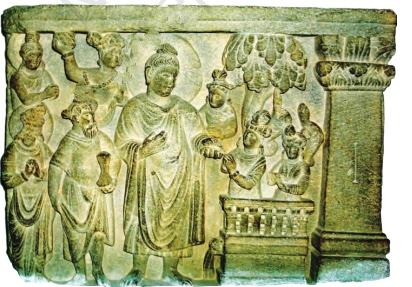Class 6 Social Science Chapter 7 Question Answer Guide - India's Cultural Roots
FAQs on NCERT Solutions for Class 6 Social Science Chapter 7 India's Cultural Roots 2025-26
1. What were the Vedas in ancient India?
The Vedas are the earliest known literary works of ancient India, composed in Vedic Sanskrit. They are a collection of hymns, prayers, and philosophical treatises, forming the foundation of Hinduism. The four main Vedas are Rigveda, Samaveda, Yajurveda, and Atharvaveda.
2. Who was Aryabhata and what was his major contribution?
Aryabhata was a brilliant ancient Indian mathematician and astronomer. His most significant contribution was proposing that the Earth rotates on its axis and explaining lunar and solar eclipses. He also gave a remarkably accurate value for Pi.
3. What is a stupa as discussed in Class 6 SST?
In Class 6 SST, a stupa is described as a dome-shaped structure built to house Buddhist relics. Originally simple mounds, they evolved into elaborate structures of brick and stone, such as the Great Stupa at Sanchi, serving as important sites of worship.
4. How can I find all the questions and answers for Class 6 Social Science Chapter 7?
You can find all the Class 6 Social Science Chapter 7 question answers in well-structured NCERT Solutions. These resources provide clear, step-by-step explanations for every exercise question, helping with homework and effective exam preparation.
5. What is included in the NCERT Solutions for India's Cultural Roots?
NCERT Solutions for India's Cultural Roots include detailed, expert-verified answers for all in-text and chapter-end exercise questions. They are designed to clarify concepts from the textbook, ensuring students can confidently answer any question asked in exams.
6. Name the two great Sanskrit epics of ancient India.
The two great Sanskrit epics of ancient India are the Ramayana and the Mahabharata. The Ramayana tells the story of Rama, while the Mahabharata, which includes the Bhagavad Gita, narrates the conflict between the Pandavas and the Kauravas.
7. Where can I get the India's Cultural Roots Class 6 NCERT PDF for solutions?
You can download the solutions for the India's Cultural Roots Class 6 NCERT PDF from the Vedantu website. This Free PDF provides convenient offline access to all answers, making it easy for students to study anytime without needing an internet connection.
8. Why are NCERT Solutions useful for preparing SST Chapter 7?
NCERT Solutions for SST Chapter 7 are useful because they simplify complex historical and cultural concepts. They help students accurately understand key terms, events, and ancient contributions, which builds a strong foundation for answering exam questions correctly.
9. Are extra questions and answers available for Indian Cultural Roots Class 6?
Yes, you can find Indian Cultural Roots Class 6 extra questions and answers on educational platforms. These additional questions help reinforce learning, cover the chapter in more detail, and provide extra practice beyond the textbook exercises for better preparation.
10. What was the contribution of Sushruta to ancient Indian medicine?
Sushruta, known as the 'Father of Surgery,' authored the Sushruta Samhita. This ancient text details complex surgical procedures like plastic surgery, cataract surgery, and the treatment of fractures, showcasing India’s advanced medical knowledge thousands of years ago.



























